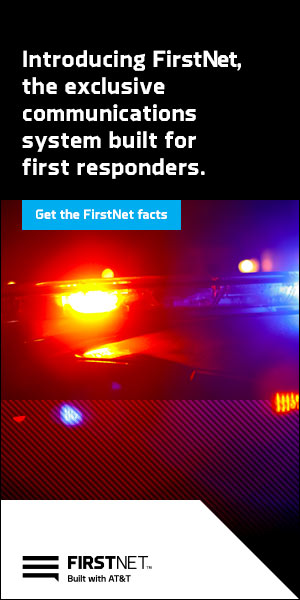by AllThingsECC.com | Sep 2, 2021 | Articles, Comm Center News
Last week, several readers pointed out that cloud-based interoperability might not always be best for network-to-network and network-to-Land Mobile Radio (LMR) Push-To-Talk (PTT) interoperability. For example, one reader suggested Los Angeles County (Los Angeles Regional Interoperable Communications System, LA-RICS) and the Los Angeles City Police Department, which are using cloud-based interoperability between them, would be better served if they used direct interconnectivity instead of relying on a remote cloud. I agree, and I should have mentioned that one major vendor could become the only FirstNet-to-LMR interoperability provider. I also neglected to talk about my fear that even if this vendor’s PTT will interoperate with other already-certified FirstNet PTTs, there will be pricing discrepancies between this vendor and other push-to-talk providers that have already amassed a large number of FirstNet/LMR-integrated customers…
by AllThingsECC.com | Sep 1, 2021 | Articles, Comm Center News
Kenzie Capece, Senior Public Safety Advisor, First Responder Network Authority
On August 26, the First Responder Network Authority’s (FirstNet Authority) Public Safety Advisory Committee (PSAC) held a business meeting to report on committee operations, progress of recent working groups, and FirstNet’s most recent accomplishments and activities.
Welcome and Leadership Update
PSAC Chair Todd Early welcomed members with remarks that focused on his retirement from the PSAC and his appreciation for the work and expertise the PSAC provides to the FirstNet Authority.
FirstNet Authority Board Chair Tip Osterthaler and CEO Ed Parkinson announced that longtime PSAC and Executive Committee member Jonathan Olson, representing the National EMS Management Association, would serve as interim PSAC Chair, effective upon Todd’s retirement. Tip and Ed also took this opportunity to thank Todd for his leadership, guidance, and commitment to grow the FirstNet network during the years he served on the PSAC, including the three years serving as its Chair.
READ FULL ARTICLE
by AllThingsECC.com | Sep 1, 2021 | Articles, Comm Center News
How the Nation’s Most Important Wireless Network was Born
“First responders from other states headed to New York and Washington, D.C. While their assistance was welcomed, their presence further complicated the communications conundrum.”
On the morning of Sept. 11, 2001, Chief Chuck Dowd pulled up to the security gate at the New York City 9-1-1 Center where he was commanding officer of the New York Police Department’s communications division. An officer told him that a small plane had just hit one of the World Trade Center buildings. While the news concerned him, he had no idea what he was about to walk into.
“I went into the 9-1-1 Center and the place was a madhouse,” Dowd said. “As you can imagine, the calls were coming in from everywhere and they were horrific. Our folks were talking to people in the buildings who they knew were not going to get out alive. It was a terrible time.”
READ FULL ARTICLE
by ECC Editor | Aug 30, 2021 | Articles, Comm Center News
BOISE, Idaho (AP) — Empty cow pastures on one day can be bustling with hundreds of firefighters the next as fire camps with colorful tent cities spring up.
More than 20,000 wildland firefighters are battling some 100 large wildfires in the U.S. West, and truckloads of supplies and equipment are needed to keep them effective at fighting flames for weeks on end.
“We’ll set up a small village,” said Evans Kuo, a “Type 1” incident commander assigned to the nation’s biggest and most dangerous wildfires. His incident command team has 44 members. “The main idea of the camp is to not only house the incident command team, but also house the base camp that has food, water, sleeping and showers.” … READ MORE
by AllThingsECC.com | Aug 30, 2021 | Articles, Comm Center News
Mutualink recently announced the launch of LNK360, a revamp of its interoperability software platform that includes new features and an architecture that is designed to improve both resiliency and flexibility, according to Mutualink Chairman and CEO Mark Hatten.
“Products evolve, especially in the software world. You get to a point in the evolution of your product that you learn that it might be better to start over, in a sense, with the product than to keep adding to it,” Hatten said during an interview with IWCE’s Urgent Communications.,,
by AllThingsECC.com | Aug 27, 2021 | Articles, Comm Center News
Those responsible for managing their organization’s E911 strategy face the following new challenges:
- The shift to remote and hybrid work means that employees are largely no longer working from a fixed location.
- The increase in the adoption of softphones changes the way individuals make calls, potentially creating more difficulty in reaching a 911 operator, especially for home-based employees.
- Employees are more reliant on their mobile devices for making phone calls than ever before.
- On-premises PBXs are rapidly going away as organizations increase their use of UCaaS.
- UCaaS, coupled with bring-your-own-carrier for PSTN connectivity, adds additional management complexity in ensuring 911 call routing and location management…


